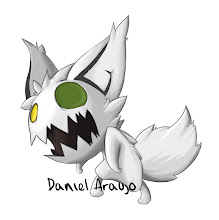Shift was 3:00pm to 11:00pm
Back at work again and I finished at 7am this morning!! Gah!!!!
Today I worked with Vicky, I love working with this girl, we have such chemistry and everything gets done perfectly and effectively. Not only do we have a great time, but our energy is positive and the dogs we are around can feel it.
The shift went well, nothing was out of the ordinary and soon it was time to do our final round before the night shift would show up. We check every section to see if all the animals have water and if they are all still healthy. Some animals can get sick very quickly compared to others, it all depends on their immunity system. While we were checking the health of our stray feline friends.I discovered two kittens were sick, we alerted Johanne.
At first, she told us to leave them alone and I was shocked and followed her back to her office complaining that the other cats could catch the germs. She soon agreed and ordered us to transfer them to Euthanasia room. The dying ones were brought to the DMV for immediate euthanasia while the others were left to wait for their morning doom.
Its sad to think that within an hour, these kittens went from playful to dying. Your probably wondering what illness this was but mostly wondering how to avoid it. Here's some information to get you started on knowing more. The only positive thing I can think about this disease is the fact that It is impossible for a cat to spread Panleukopenia to a dog, as dogs cannot contact the virus.
What is Feline Panleukopenia?:
Feline Panleuk, as it is often called, is an extremely contagious virus of the parvovirus group, with a high mortality rate, which often targets kittens. Areas with large populations of unvaccinated cats, such as feral colonies or homes of "cat collectors," are particularly susceptible to panleuk outbreaks.
Panleukopenia remains the most severe and destructive disease of cats.
Back at work again and I finished at 7am this morning!! Gah!!!!
Today I worked with Vicky, I love working with this girl, we have such chemistry and everything gets done perfectly and effectively. Not only do we have a great time, but our energy is positive and the dogs we are around can feel it.
The shift went well, nothing was out of the ordinary and soon it was time to do our final round before the night shift would show up. We check every section to see if all the animals have water and if they are all still healthy. Some animals can get sick very quickly compared to others, it all depends on their immunity system. While we were checking the health of our stray feline friends.I discovered two kittens were sick, we alerted Johanne.
At first, she told us to leave them alone and I was shocked and followed her back to her office complaining that the other cats could catch the germs. She soon agreed and ordered us to transfer them to Euthanasia room. The dying ones were brought to the DMV for immediate euthanasia while the others were left to wait for their morning doom.
Its sad to think that within an hour, these kittens went from playful to dying. Your probably wondering what illness this was but mostly wondering how to avoid it. Here's some information to get you started on knowing more. The only positive thing I can think about this disease is the fact that It is impossible for a cat to spread Panleukopenia to a dog, as dogs cannot contact the virus.
What is Feline Panleukopenia?:
Feline Panleuk, as it is often called, is an extremely contagious virus of the parvovirus group, with a high mortality rate, which often targets kittens. Areas with large populations of unvaccinated cats, such as feral colonies or homes of "cat collectors," are particularly susceptible to panleuk outbreaks.
Panleukopenia remains the most severe and destructive disease of cats.
What Are the Symptoms of Feline Panleukopenia?:
The initial symptoms are also found with many other diseases, and always indicate the need for a veterinary examination.
* Vomiting
* diarrhea
* Depression
* Disinterest in food and water
* Appearance of the "third eyelid," or haw, in the inner corner of the eye
* Lack of grooming, evidenced by dull, rough coat
* Evidence of abdominal pain
* A "hunched over" postural appearance
For more information click here

No comments:
Post a Comment